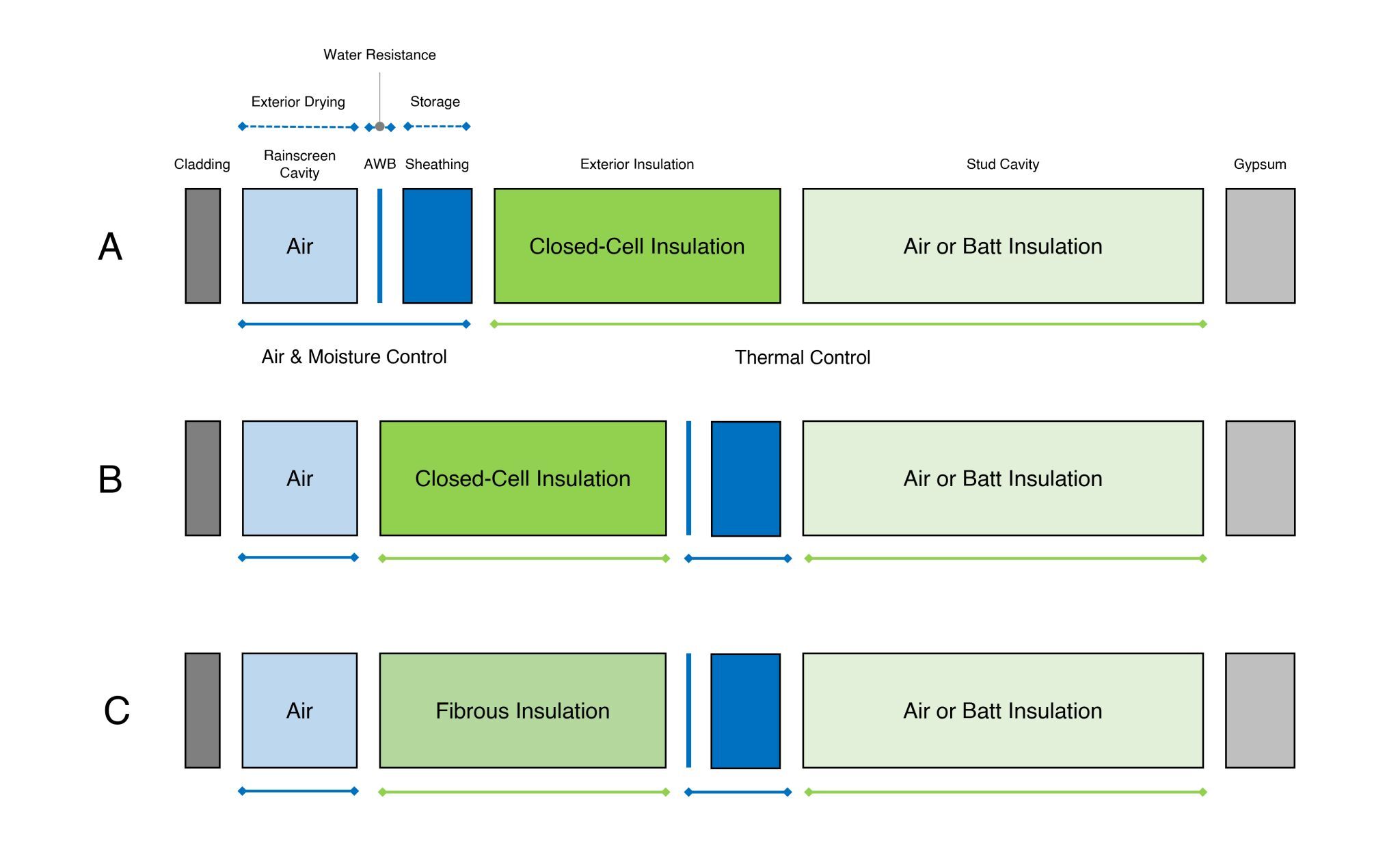Tags: #architecture #buildingdesign #buildingenclosures #buildingenvelopes #buildingscience #hygrothermal #materialsscience

Structural Insulated Sheathing: Four reasons why moving the sheathing and AWB outboard fundamentally changes hygrothermal performance. The SIS system nicely compartmentalizes its moisture and thermal layers. Each is distinct and continuous. The thermal control layer is kept dry and effective. And dew points are managed, as they should be, by the thermal layer, not the sheathing. The primary drainage plane (the AWB) is now reunited with the rainscreen air cavity – as it was intended when this strategy first emerged decades ago. Think evaporation, not bulk water release. The AWB is accessible – minimizing the amount of blind fastener penetrations while maximizing AWB continuity with its accessory components. The outboard AWB works best when it’s robust and unitized. Many are about to find this out the hard way as new SIS systems emerge that lack system-specific AWBs. A neglected role of sheathing emerges. Sheathing is more than the substrate for the AWB. It plays critical roles in moisture storage and drying. It’s the place where hygrothermal battles are won or lost. And, for that reason, it typically serves as the primary monitoring location in hygrothermal simulations No wall is perfect in all respects without respect for things imperfect.